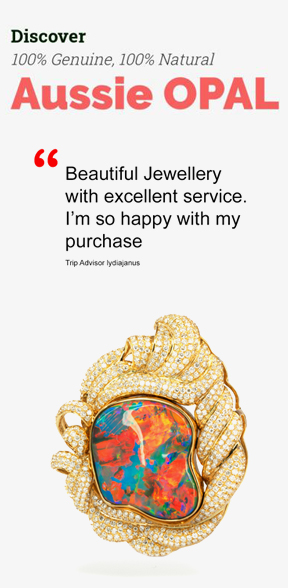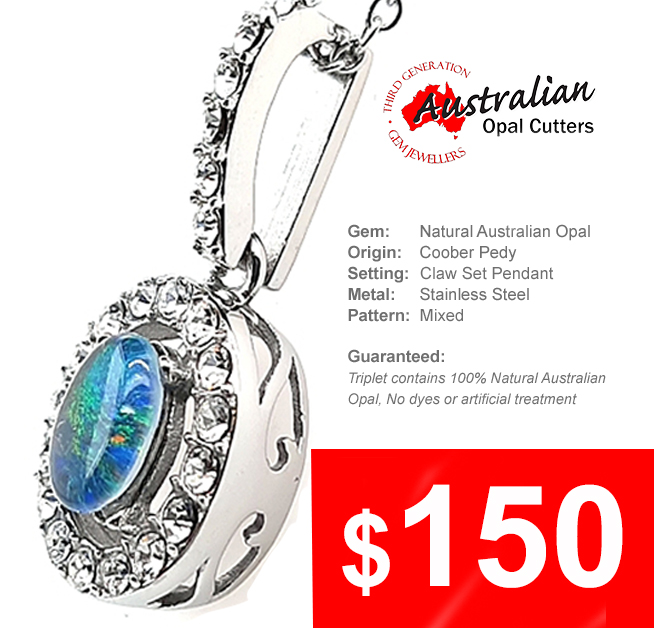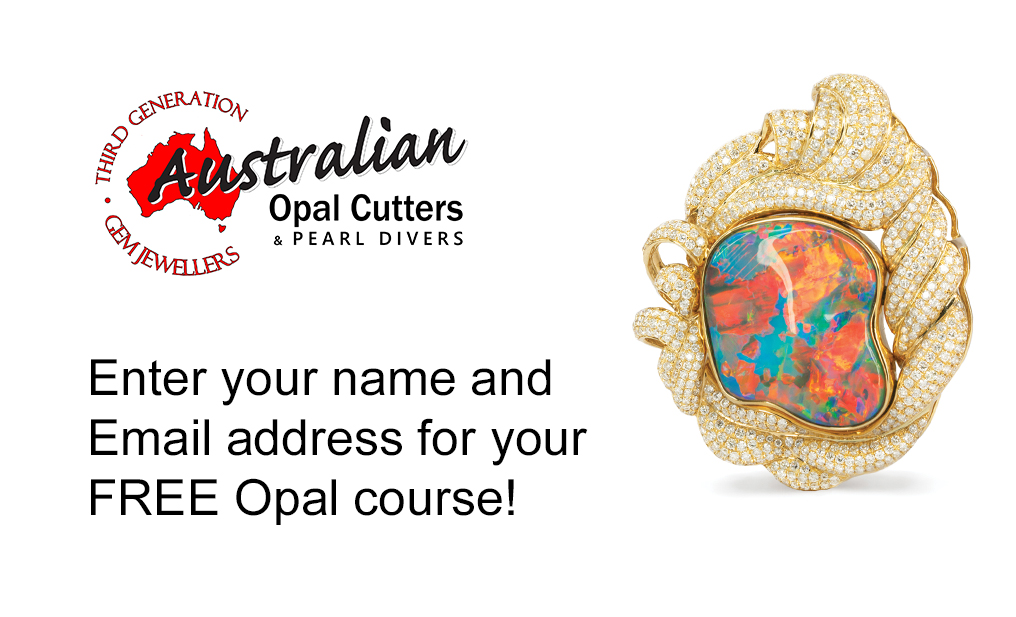Part 9-Opal Dictionary
Opal Dictionary
Andamooka:
Mining Area in South Australia. Producing Crystal Opal and treating matrix opal.
Assembled Opal:
Opal that has been glued together, also known as mosaic opal.
Boulder Opal:
Formed in cavities and cracks of ironstone, usually from Queensland,Australia.
Black Opal:
Naturally occurring rare and valuable solid opal formed in Ironoxide found in Lightning Ridge in Northern NSW.
Black Crystal Opal:
Solid black opal which is transparent due to little or no iron oxide on the back. Viewed from the top, it compares at least with N3 in darkness rating.
Blue Opal:
Solid black opal with the common blue covering the entire stone.Mistakenly called “blue opal”.
Cabochon:
A precious stone of convex hemispherical or oval form, polished but not cut into facets – The rounded surface of a cut stone.
Calibrated:
Opals cut to standard dimensions.
Carat:
Standard to express the weight of gemstones. One carat equals 0.2grams. Gem quality black opals can sell for more per carat than diamonds.
Chinese writing:
Type of opal pattern with criss crossed strokes of colour looking like oriental Chinese characters.
Clarity:
The degree of transparency and clear colours and patterns of an opal.
Clarity Cross:
A black cross on a white background to measure the degree of clarity of an opal.
Common Opal:
Opal which does not show any play of color. Potch is another name for common opal and common opal is found on the bottom of most opals.
Crazed Opal:
Opal with a multitude of little cracks.
Crystal Opal:
Transparent/translucent opal. Also known as Light opal found in Coober Pedy in South Australia.
Directional Colour:
Degree of colour change with shift of light.
Doublet:
Enhanced opal consisting of crystal opal and ironstone sealed together with black cement.
Fire:
Colours which can be seen brightly even in darkness or in the shade.
Free-form:
A naturally shaped opal – something other than an oval or round shape eg. Boulder opal cut generally in rectangular or triangular shapes to avoid unnecessary colour wastage.
Harlequin:
A rare mosaic-like chromatic pattern in rounded, angular, or roughly square patches of equal size.
Inclusions:
Non-Opal or Common Opal showing in the face of the opal. Can be considered the “flaw” of the opal.
Lightning Ridge:
Mining town in New South Wales. Famous for its black opal.
Matrix:
Treated Boulder opal. Mixed with sugar to get the Matrix effect.
Multicolor:
Opal which has at least three distinct fire colors.
Nobby:
Nodule of opal almost exclusively from Lightning Ridge.
Picture Stone:
Highly valuable opal which shows a distinct image other than a pattern.
Pinfire:
Type of opal pattern where specks of different colours cover the whole stone.
Potch:
Opal without any colour, also called Iron Oxide.
Ribbon:
Type of opal pattern with the colour running in stripes.
Rough Opal:
Opal in its natural state; as it comes out of the ground.
Rubs:
Opal pieces initially shaped with waste material/sand removed but not yet cut and polished.
Seam Opal:
A naturally occurring solid piece of opal, cut into a stone.
Synthetic:
Opal grown in a laboratory. Present day manufacturers of synthetic opals include Pierre Gilson (the original manufacturer), Inamori (a Japanese manufacturer) and unspecified Russian and Chinese manufacturers.
Triplet:
A stone comprising of a thin layer of natural opal with an attached dark backing and a clear crystal capping.
Yowah Nut:
Small ironstone boulder, containing opal either as a solid kernel or in concentric layers.



